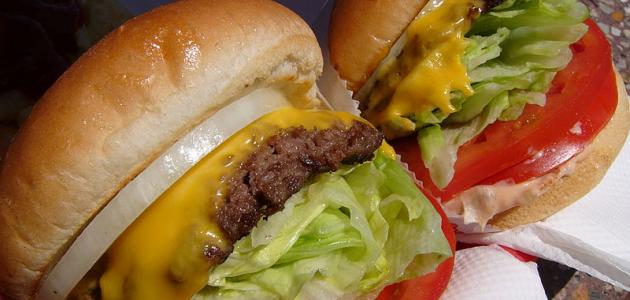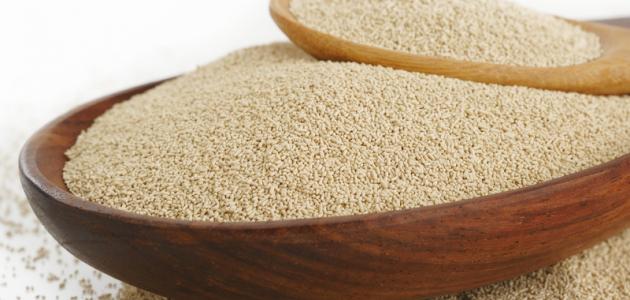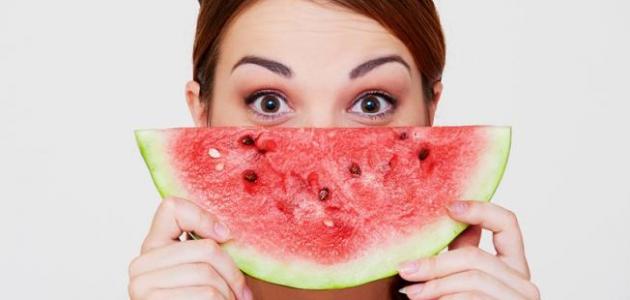Contents
Is it possible to quickly fatten the body
Actually; It may be difficult for some people to gain a healthy weight quickly [1]. Also, rapid weight gain can lead to the emergence of some health problems, including bloating, stomach upset, and fluid retention, and these symptoms can negatively affect the athletic performance of athletes, as well as Rapid weight gain may increase triglyceride levels. Thus, an increased risk of heart disease , and it should be noted that the speed of weight gain depends on the number of calories a person needs to maintain his weight. [2]
The most important step to gaining weight is to increase the number of calories consumed by a greater amount than the body needs, and to gain weight slowly, a person needs to increase the number of calories in an amount ranging from 300 to 500 calories above the level of his daily needs, while the person needs to increase the number of calories in an amount ranging from Between 700 and 1000 calories to gain weight more quickly, it should be noted here that people who suffer from thinness and try to gain weight should pay attention to gaining balanced amounts of muscle mass and visceral fat, instead of gaining large amounts of Unhealthy fat in the abdominal area. [3]
Fast foods can cause weight gain. However, it does not cover the body’s needs of nutrients, and it contains a lot of fats, sugars, and salt, which are harmful to the body. Therefore, the process of gaining weight requires a balanced diet, [4] and a healthy weight gain ranges between half a kilogram to a kilogram. One per week; However, this may differ from person to person. [5]
General tips for fattening the body
When trying to gain weight; Focus on the quality of food to gain a healthy weight. [6] Here are some tips that can be followed to gain weight in a healthy way:
- Increase the number of calories through healthy foods: As mentioned previously; Increasing the number of calories consumed by more than what the body burns is the most important step to gaining weight, as it is possible to eat 300 to 1000 calories higher than daily needs. [3] Examples of meals with high calorie content include the following: [7]
- Breakfast can contain boiled whole milk with cereals - like oatmeal - with chopped fruits or raisins, and eggs can be eaten with toast.
- Milkshakes are a good snack that can be prepared at home and taken anywhere, and can be supplemented with milk powder to get more protein and calories.
- Lunch can include potatoes with baked beans or tuna, as this meal contains carbohydrates and proteins.
- Yogurt and desserts made from milk can be eaten, such as milk rice As these foods are considered energy-rich sources, [7] you can also eat unsalted nuts and chickpeas with Arabic bread, and it is also recommended to eat vegetables; Carrot , or celery. [8]
- It should be noted here that when talking about foods high in calories; Usually thinking goes to fats , as they contain more than twice the amount of calories than the same amount of protein or carbohydrates, but in general it is recommended to stay within the recommended amounts of fats, and choose healthy unsaturated fats, which can be obtained from oils Girlhood, nuts, seeds, olives, and avocados, avoiding coconut oil and palm oil, because they contain saturated fats. [1]
- Eating foods rich in nutrients: Instead of eating foods that are high in calories and poor in useful nutrients such as fast foods, it is advisable to eat foods rich in nutrients, as this helps to ensure that the body gets the most nutrients, even if the person suffers from a decrease in appetite. [4]
- Eat adequate amounts of protein: Proteins help build and repair muscle tissue, produce hormones, strengthen the immune system, and replace blood cells. From sources rich in protein: meat, poultry, beans, milk, and eggs , in addition to nuts and soy, it should be noted that The daily recommended amount of protein is 0.8 grams per kilogram of body weight, which covers 15-20% of the total daily calories. [9] Some people may choose to eat protein shakes, which may aid in weight gain and build muscle when drinking it soon after exercise, however many ready-made protein shakes contain extra sugars and other ingredients that should be avoided. [10]
- Eat carbohydrates and healthy fats: Carbohydrates are the main source of energy in the body, and are usually found in grains, bread, rice, pasta, fruits, and vegetables, in addition to the importance of carbohydrates in providing the body with energy. It helps to nourish the brain and nervous system, maintain protein, and aid in the metabolism of fats, in addition to providing fiber , and the percentage of daily carbohydrates needs ranges between 50 to 60% of the calories that the body needs daily, and fats are also important elements. Because it provides the body with energy, helps to feel full, and provides the necessary fatty acids that the body needs in many different processes, and the percentage of daily needs of fat ranges between 20 to 30%. [9]
- Eating small frequent meals: Being thin may lead to a person feeling full quickly, so it is recommended to eat five to six small meals during the day instead of two or three large meals. [11]
- Attention when consuming drinks: Some people find that drinking liquids before meals may weaken the appetite, and in this case it is preferable to drink high-calorie drinks with meals or snacks, and for other people it is preferable to drink half an hour after meals and not in conjunction with meals. [11]
- Get enough sleep: The body needs time to rebuild and store muscles in a healthy way. [1]
- Other tips: We mention the following:
- Adding healthy, calorie-boosting ingredients to dishes; Where healthy oils can be added to salads; Such as olive oil, olives , avocados, nuts, and sunflower seeds, and it is best to avoid foods that are low in calories or low in calories. [12]
- Use of large plates for eating; This may help you to pour more portions and eat more food. [13]
- Setting a schedule for eating; This may help remind the person to eat when they are not feeling hungry, and make sure the person gets all of their meals. [13]
- Adding some herbs and spices, which may help improve appetite by aiding digestion, reduce flatulence, in addition to enhancing the flavors in food. [13]
An example of a fattening diet
It is worth noting that there is no single diet that fits all people, [14] so it is preferable to consult a nutritionist, who helps a person gain weight in a healthy and appropriate way, [15] and the daily caloric needs depend on many factors, the most important of which are: Age, gender, height, weight, and physical activity. [16]
Daily estimates of calories range from 1,600 to 2,400 calories for adult women and 2,000 to 3,000 calories for adult men. Usually, people who lead a sedentary lifestyle - that is, they do not engage in physical activity - are advised to consume a minimum of calories. They exercise a lot of physical activity by consuming the maximum of these calories, [16] and as mentioned previously; People who want to gain weight need to add between 300-1000 calories to their daily needs. [3]
For example , a man may not want to exercise aerobic exercise to increase its weight in a slow and steady, and then may be recommended to add 500 calories to your daily needs; It is 2000 calories, so his daily consumption of calories is 2500 calories, but as we mentioned earlier; This varies from person to person, so it is best to consult a nutritionist to determine the appropriate number of calories for each person. [16] [3]
For a more detailed understanding of how to calculate the calories the body needs, read the article How to calculate the calories the body needs .
It is worth noting that the diet should contain a variety of foods from different food groups, and in what follows is an example of the portions that should be included in a diet containing 3000 calories: [17]
| Food group | The number of daily servings | Examples of food rations |
|---|---|---|
| fruits | Two and a half cups | One cup of fruits equals the following:
|
| Vegetables | 4 cups | One cup of vegetables equates to:
|
| Grain | 280 grams | 30 grams of grains equals the following:
|
| Protein | 200 grams | 30 grams of protein equates to the following:
|
| milk products | 3 cups | One cup of dairy group equates to:
|
For more information on diets for weight gain, read the article Reasons for Thinness and Steps to Treat It .
Does exercise help to fatten the body
To gain weight and build muscle, you must follow a healthy diet and exercise, as the goal of exercise is to build muscle and not burn more calories. [18]
Resistance training is a good exercise. As it contributes to building muscle tissue, which helps in gaining a healthy weight, it can be practiced two or three times a week as a minimum, and it is recommended to do strength exercises one to two times for each muscle group, in addition to doing aerobic exercises; Like running , cycling or swimming, these exercises promote heart health. [1]
It should be noted that people who suffer from low weight caused by eating disorders should not exercise without consulting a doctor. [19]
For more information about exercise and weight gain, read the How to gain weight with sport article .
Thinness overview
Thinness is defined as being underweight than normal. And it can be known whether a person is thin by calculating the body mass index , and the normal body mass index ranges from 18.5 to 24.9, and a person is considered thin if he has a body mass index less than 18.5. [20]
You can find out how to calculate BMI when reading the BMI Calculation Method article .
It should be noted that being thin may cause many health problems. As it can lead to a decrease in energy and affect the immune system. This makes a person more susceptible to infection, and it can also lead to a loss of vitamins and minerals that the body needs for growth and development. Therefore, people with thinness are advised to consult a dietitian to help them gain weight in a healthy and appropriate way for each person’s condition and needs. [8]
References
- ^ A b T w : Beth Orenstein (1-11-2010), "How To Gain To the Healthy Weight" , Www.everydayhealth.com , Retrieved 8-10-2020. Edited.
- ↑ Gavin Walle (29-8-2019), “A 3,000-Calorie Diet: Benefits, Weight Gain, and Meal Plan” , www.healthline.com , Retrieved 8-10-2020. Edited.
- ^ A b t w Kris Gunnars (20-7-2018), "How To Gain Weight To the Fast And Safely" , Www.healthline.com , Retrieved 8-10-2020. Edited.
- ^ A b " the Healthy Ways To Gain Weight If the You're Underweight" , Familydoctor.org , 13-8-2020, Retrieved 8-10-2020. Edited.
- ↑ “Promoting Healthy Weight Gain In Your Underweight Teen: A Guide for Parents” , youngwomenshealth.org , 22-5-2019, Retrieved 8-10-2020. Edited.
- ↑ Tim Jewell (24-6-2019), “How to Exercise to Bulk Up and Shape Your Body” , www.healthline.com , Retrieved 8-10-2020. Edited.
- ^ A b "Underweight Adults" , Www.nhs.uk , 21-4-2020, Retrieved 8-10-2020. Edited.
- ^ A b "Underweight Teen Boys" , Www.castlegateandderwentsurgery.nhs.uk , Retrieved 6-10-2020. Edited.
- ^ A b "Weight Gain" , Swc.osu.edu , Retrieved 8-10-2020. Edited.
- ↑ Jenna Fletcher (1-1-2020), "How do you gain weight quickly and safely?" , Www.medicalnewstoday.com The , Retrieved 8-10-2020. Edited.
- ^ A b of Katherine Zeratsky (27-8-2020), "What ' 's of a Good Way To Gain Weight You're the if Underweight?" , Www.mayoclinic.org , Retrieved 8-10-2020. Edited.
- ↑ "Healthy Weight Gain" , www.eatright.org , 16-1-2020, Retrieved 9-10-2020. Edited.
- ^ A b T Arlene Semeco (18-9-2017), "16 Ways To Increase Your Appetite" , Www.healthline.com , Retrieved 9-10-2020. Edited.
- ↑ Amy Gorin (2-2-2020), “The Weight Loss Plans to Try and the Fad Diets to Skip if You Want to See Results” , www.everydayhealth.com , Retrieved 9-10-2020. Edited.
- ↑ "How Many Calories Do You Really Need?" , www.webmd.com , 12-11-2018, Retrieved 9-10-2020. Edited.
- ^ A b v "Appendix A 2. Estimated Calorie Needs Per Day, by vBulletin® the Age, Sex, And the Physical Activity About Me Level" , Www.health.gov , Retrieved 9-10-2020. Edited.
- ↑ "MyPlate Plan: 3000 calories, Age 14+" , www.choosemyplate.gov , Retrieved 9-10-2020. Edited.
- ↑ Henry Halse (9-4-2020), "Workout Schedule for Women Trying to Gain Weight and Muscle" , www.livestrong.com , Retrieved 9-10-2020. Edited.
- ↑ "Underweight" , www.womenshealth.gov , Retrieved 9-10-2020. Edited.
- ↑ "What to do if you are underweight" , www.healthdirect.gov.au , 2019, Retrieved 6-10-2020. Edited.









